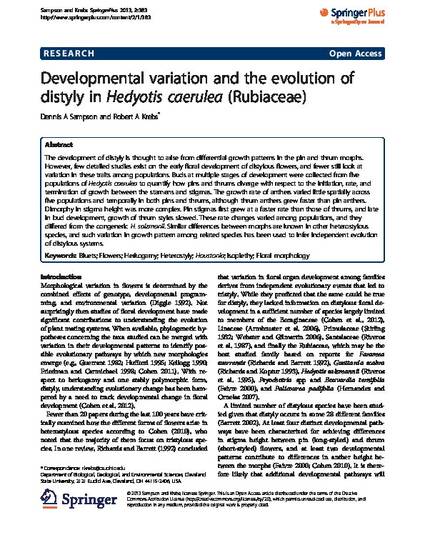
The development of distyly is thought to arise from differential growth patterns in the pin and thrum morphs. However, few detailed studies exist on the early floral development of distylous flowers, and fewer still look at variation in these traits among populations. Buds at multiple stages of development were collected from five populations of Hedyotis caerulea to quantify how pins and thrums diverge with respect to the initiation, rate, and termination of growth between the stamens and stigmas. The growth rate of anthers varied little spatially across five populations and temporally in both pins and thrums, although thrum anthers grew faster than pin anthers. Dimorphy in stigma height was more complex. Pin stigmas first grew at a faster rate than those of thrums, and late in bud development, growth of thrum styles slowed. These rate changes varied among populations, and they differed from the congeneric H. salzmanii. Similar differences between morphs are known in other heterostylous species, and such variation in growth pattern among related species has been used to infer independent evolution of distylous systems.
